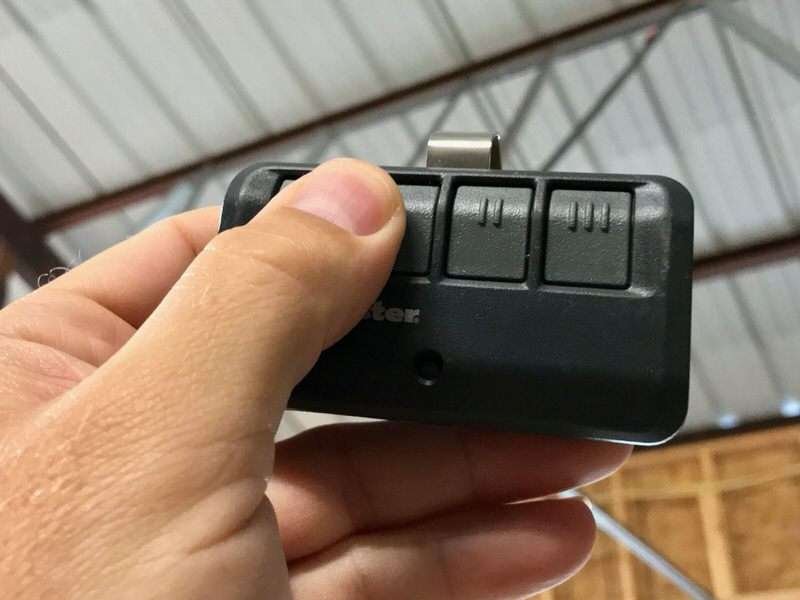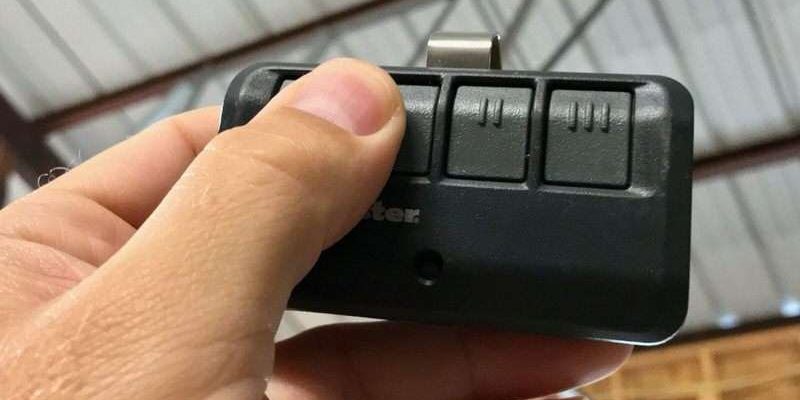
This isn’t just a random glitch. Garage door remotes rely on radio signals, almost like tiny walkie-talkies talking to your opener. When those signals get lost or garbled, your trusty remote starts acting up. Chamberlain, one of the most popular brands for garage openers, uses this wireless tech in almost all their models. The trouble is, signals can be finicky—walls, wires, or even your neighbor’s gadgets can mess with them. If your garage has become a dead zone, let’s break down why that’s happening and how you can actually fix it.
How Chamberlain Garage Remotes Use Radio Signals
Let me explain how your Chamberlain garage remote talks to the opener. The whole system works through *radio frequency (RF) signals*. Think of it like a secret handshake: when you press the remote button, it sends out a coded message at a specific frequency (usually 315 MHz or 390 MHz, if you’re wondering). The garage opener listens for this code, recognizes it as “friend,” and opens the door.
But here’s the thing—these signals are invisible, and lots of devices love to use the same frequencies. Wi-Fi routers, baby monitors, even some LED lights can all toss their own “noise” into the airwaves. And if your remote’s code and the opener’s memory get out of sync, that handshake fails. Sometimes, interference can make it seem like the remote needs to be reset, paired, or even replaced when the real culprit is just invisible static in the air.
Chamberlain uses rolling codes (also called Security+), which means the code changes every time you press the button. This keeps your door secure, but it also means both the remote and opener need to stay in perfect sync. If interference garbles that signal, your door basically stops listening.
Common Sources of Signal Interference Near Your Garage
So, what’s jamming up those signals? Honestly, it might surprise you. The most common source of interference is actually other *wireless electronics* around your home. Walk into most garages, and you’ll find a jungle of devices: smart lights, wireless speakers, even electric vehicle chargers. Each one sends out its own radio signals, sometimes on the same band your Chamberlain uses.
Here’s a list of likely culprits:
- LED lights: Some cheaper LED bulbs, especially those with built-in wireless controls, can emit electromagnetic noise on the same frequencies as your remote.
- Wi-Fi routers and extenders: Placing a router in or near your garage? That signal soup can drown out the remote.
- Security systems: Wireless door or window sensors talk across similar radio bands.
- Neighbor’s garage doors: Live in a townhouse or close-knit subdivision? Sometimes everyone’s Chamberlain openers butt heads on overlapping frequencies.
I once helped a friend track down a stubborn issue that turned out to be her husband’s new workbench lamp. Yep, every time he turned it on, the garage remote started throwing a tantrum. Once you know what to look for, it’s a little like playing detective—sometimes the thing you least expect is the troublemaker.
Physical Barriers That Block or Weaken Signals
You might be wondering, “Can walls really block a simple garage remote?” The short answer is: absolutely. While radio waves can travel through some walls, they lose strength every time they pass through dense material—or bounce off metal objects. If your garage has thick brick, poured concrete, or is crammed with metal shelving, that signal can get chewed up before it even reaches the opener.
Some common physical barriers include:
- Metal doors and siding: Metal reflects radio signals, making it harder for your remote’s code to reach the opener.
- Insulation and foil: That shiny foil lining in insulated garage doors looks nice but can act like a shield against RF signals.
- Distance: Chamberlain remotes are rated for a reasonable range, but if you’re at the very edge of that limit (say, down the driveway), even a few extra feet can make a difference.
It’s not just big things, either. Even a stack of bikes or a parked car in the wrong spot can disrupt the path between your remote and the garage opener. If you notice the remote works fine inside but not from the driveway, the issue may be something as basic as where you’re standing.
Battery Issues: The Overlooked Interference Factor
Let’s get real—sometimes the problem is less mysterious than you think. Weak batteries in your remote don’t always just “die” suddenly. Instead, they send out weaker signals, drifting in and out, getting distorted by competing devices and walls. You might notice the range dropping, or the door only opening if you’re right up close.
Here are some signs that your remote’s battery is causing trouble:
- Your Chamberlain remote works sometimes, but isn’t reliable.
- The range is much shorter than it used to be.
- You need to press the button multiple times.
Swapping the battery is cheap and easy, but often people overlook it, thinking a failing remote has something more complicated going on. Honestly, if your remote hasn’t been refreshed in a year or two, it’s worth popping in a new battery before chasing down bigger fixes.
Electronic Code Conflicts and Sync Problems
Now and then, the problem isn’t outside interference, but something going wrong inside the system itself. Chamberlain garage openers and their remotes use a specific code to pair up—kind of like two friends with a secret handshake. If that code gets scrambled, or if you try to use an unpaired universal remote, the system won’t talk properly.
You might run into trouble if:
- You’ve recently tried to pair or program a new remote and it didn’t sync up right.
- Somebody else in the household has tried to reset the opener or remote.
- You’ve switched to a universal remote without following all the pairing steps.
The fix usually involves a quick code reset and re-pairing process. With Chamberlain models, this means holding down the “learn” button on the opener and re-syncing the remote. Just make sure you follow the steps in the manual—rushing ahead or skipping a step can leave your garage stuck in limbo.
If you’re ever unsure about the pairing process or want to double-check your remote’s sync, take a deep breath and consult the Chamberlain user guide. It’s easier than you think to miss a step or mix up the codes.
Environmental Factors: Weather, Power Surges, and More
It sounds odd, but sometimes Mother Nature likes to get in on the interference game. Heavy rain, snow, or extreme humidity can mess with your remote’s performance. Most of the time, it’s not the weather itself, but what it does to your garage and the electronics inside. Water leaks or condensation can corrode the opener’s circuit board, or even short out wiring, leading to a weak or unreliable signal.
Power surges from lightning strikes or nearby construction can also scramble electronic components. If you notice your Chamberlain remote acting up after a storm or power outage, don’t rule out the possibility of some minor damage—either to the opener, the wall button, or even the wiring inside the ceiling.
What about solar interference? During certain times of day, strong sunlight can actually *reflect off shiny cars* or floors and cause odd, seemingly random issues with the sensor beams at the bottom of the door. If your door won’t close, and you’ve ruled out remote trouble, it might be a simple case of glare tripping the safety sensors.
When To Consider Resetting or Replacing Your Remote
Sometimes, after you’ve ruled out interference, weak batteries, and other easy fixes, the remote itself is the problem. Electronics wear out—especially when they live in a car’s glovebox or on a well-used keychain. Old remotes may have buttons that stick, worn-out contacts, or internal parts that corrode over time.
If you’ve tried:
- New batteries
- Moving or unplugging wireless devices nearby
- Syncing or re-pairing the remote with your Chamberlain opener
…and you’re still getting nothing? It may be time to invest in a new remote—or consider upgrading to a universal remote that’s designed to work with multiple brands, including Chamberlain. Just remember: universal remotes need to be programmed with the right code, and not all offer the same range or reliability as the original.
A replacement remote can cost less than a dinner out, but make sure to check compatibility with your Chamberlain model before buying.
How To Troubleshoot Signal Interference: Step-By-Step
Here’s my step-by-step process for tackling Chamberlain garage remote interference. Even if you’re not “techy,” these steps are beginner-friendly and won’t take more than a Saturday afternoon.
- Check the batteries. Start with a fresh battery in your remote. An old one can mimic all kinds of interference.
- Remove nearby wireless gadgets. Unplug LED lights, smart plugs, or routers near the garage and test the remote again. If it works, plug each item back in one at a time to find the culprit.
- Look for physical barriers. Try using the remote from just outside the garage, then gradually increase your distance. Notice where it stops working—it could point to something blocking the signal.
- Reset and re-pair. Follow the syncing process for your Chamberlain model. Hold the “learn” button on the opener (usually on the back), then press the button on your remote to pair them again.
- Test at different times. Sometimes a neighbor’s device only interferes at certain hours. Try opening your garage early morning, midday, and evening to spot patterns.
Take your time. Sometimes you find the fix on the first try; sometimes it takes a little patience.
The Difference Between Chamberlain and Universal Remotes
Some folks wonder if switching to a universal garage remote might help with interference. Here’s the scoop: While universal remotes are handy—especially if you’ve lost your original—they still depend on the same radio frequencies and face the same interference risks. The main difference is in pairing and compatibility. A Chamberlain-branded remote is designed to sync up faster and more reliably with their openers, using rolling codes and secure protocols.
Universal remotes may need extra steps to program, and not all support the latest Chamberlain Security+ 2.0 system. If you’re having trouble with a universal remote, check its compatibility, code programming, and range limits. Sometimes, sticking with the original is just less trouble.
Final Thoughts: Keeping Your Chamberlain Remote Working Smoothly
Here’s the bottom line: Garage remote signal interference is almost always fixable, even if it takes a little detective work. Whether it’s a sneaky LED bulb, a drained battery, or just plain bad luck with overlapping signals, understanding how your Chamberlain remote works makes solving the problem a lot less stressful. If you take it step by step—checking batteries, looking out for signal-blockers, and re-syncing your code—you’ll usually get your garage door back on track.
Next time your Chamberlain garage remote throws a fit, don’t get discouraged. With a little know-how (and maybe a fresh battery), you’ll be back to smooth, reliable door-opening—no more waving your remote around like a magic wand, hoping for a miracle.
